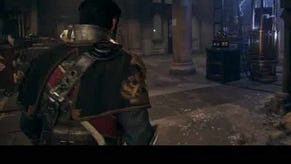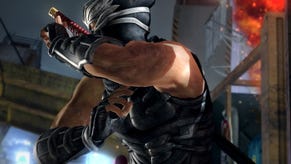Digital Foundry: Hands-on with Dead or Alive 5 Last Round
Final fight.
Boasting two extra characters, new stages, and a variety of additional costumes, Dead or Alive 5: Last Round is the definitive version of Tecmo's divisive fighting game. Available across current and last-generation consoles, the title is remastered for the PlayStation 4 and Xbox One using the extra power on offer to deliver 1080p60 gameplay - a clear leap above the variable framebuffer and slightly wobbly frame-rates present on Xbox 360 and PlayStation 3. While there's some confusion surrounding the actual release of the full game, the Core Fighters version is available now on PS4, PS3 and Xbox One, allowing us to get some hands-on time with the title.
In terms of the actual remastering, we're looking at a pleasant enough, if somewhat workman-like effort. As expected, the jump to native 1080p allows for smaller details and distant scenery to resolve with more clarity, with the game boasting a crisp appearance that complements the clinical anime art style the series is known for. There are minor visual improvements here and there, but by and large, the move to a fixed full HD resolution is the most obvious boost to overall image quality. However, a complete lack of anti-aliasing is unexpected and disappointing, leading to some shimmering around more detailed parts of the environment.
Given the massive leap in GPU power available on the current-gen systems, we find it hard to be believe that Tecmo didn't have enough rendering time left over to at least implement a low-cost AA solution - such as SMAA, or even FXAA - into the mix. In the past, the developer has been ahead of the curve, with Dead or Alive 4 on the 360 using 2x MSAA while running natively at 720p60, but we're not seeing the same drive towards taking advantage of the hardware here.
By comparison, the last-gen editions of Dead or Alive 5 Last Round use a dynamic framebuffer, aiming for native 720p but dropping into sub-HD territory when the engine is under load. While the upscale to 1080p looks OK - despite the lack of anti-aliasing - image quality takes a visible dive when the dynamic framebuffer kicks in, producing fuzzy detail that does no favours to some of the low resolution artwork.
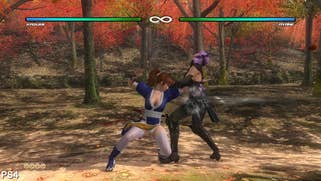
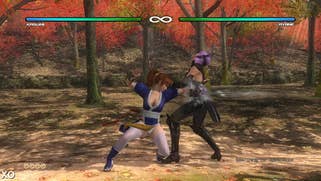


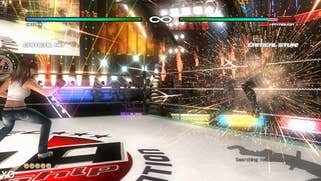
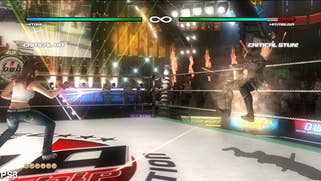

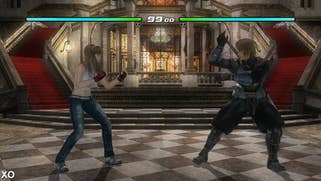
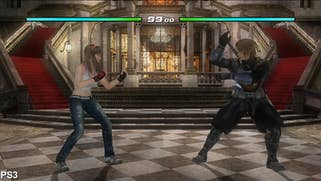
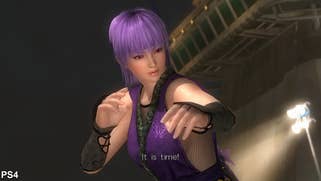
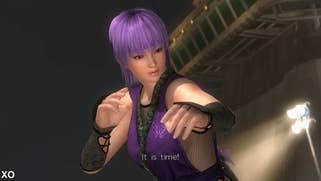

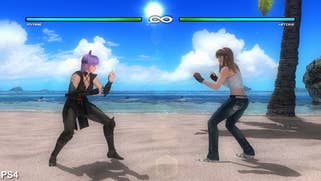
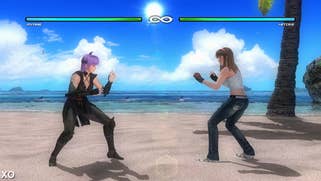

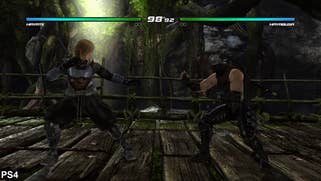

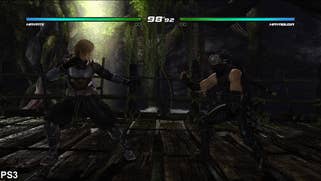



The dynamic resolution scaling of the last-gen versions is a thing of the past with the remaster, with both machines handing in an identical 1080p presentation, with a handful of mild graphical upgrades outside of the boost to raw resolution. The flagship addition to the PS4 and Xbox One versions of Last Round is the use of what Tecmo calls the Soft Engine, adding more authentic elasticity to characters' skin as they move. This effect is generally subtle, but is utilised liberally on female characters' breasts in order to deliver added bounce - demonstrated here in this embarrassing promotional video.
On the whole, the upgrades across other areas of the game are thin on the ground. Tecmo's focus is clearly geared towards mildly tweaking and refining the core art and effects-work instead of making large sweeping changes. Essentially we're looking at tidied up 360/PS3-level assets designed to better fit the target 1080p resolution. The lighting model is tweaked on the PS4 and Xbox One, with Team Ninja adding and repositioning light sources across various locations to give characters and environments greater depth, with higher resolution shadows. Meanwhile, alpha effects are given a boost, resulting in more debris and particles when characters collide and smash through parts of the environment.
At first glance, the core artwork appears relatively unchanged, and blurry textures are found across surfaces in many of the game stages. However, on closer inspection we can see that texture detail is given a small boost via higher resolution artwork. This allows for finer details come across more clearly on the PS4 and Xbox One: cracks and patterns on rocky surfaces appear more defined, as does the embroidery on character costumes. It's a welcome upgrade, although not all surfaces benefit from the extra level of clarity on offer due to the texture filtering implementation more heavily blurring textures at steeper angles than the last-gen versions.
While there isn't much of a boost to the core aesthetic, the increase in resolution works well in eliminating the slightly rough look found on Xbox 360 and PS3, where the combination of sometimes bland artwork in combination with the dynamic framebuffer doesn't always show the game in the best light. Less eye-catching locations - such as Hot Zone and Street - still suffer from muted colour schemes, but now the details stand out more clearly.
In terms of current-gen performance, the remastered Dead or Alive 5 delivers a tangible upgrade over the PS3 version of the game, free from the small bouts of tearing and mild frame-rate drops that briefly impact gameplay in more demanding scenes on Sony's last-gen system. With PlayStation 4, Team Ninja delivers a locked 60fps presentation - as a result, response feels crisp, while the combat is buttery smooth in motion.
On the other hand, cut-scene rendering is disappointing, utilising real-time sequences capped at 30fps. Since the majority of the cinematics segue directly into gameplay, the difference in frame-rate is rather jarring. It's not clear why Team Ninja couldn't get these sequences running at the same slick 60fps frame-rate as the gameplay - perhaps the developers are aiming for a more 'cinematic' feel for the interludes that break up the top-heavy fighting action. In any case the difference in fluidity just doesn't look quite right.
For the most part, the Xbox One game hands in identical performance metrics - but only if you are lucky enough not to experience any game-breaking bugs or performance hitches. Assuming you encounter a bug-free run, Dead or Alive 5 Last Round runs at a solid 60fps during gameplay, with only the occasional single torn frame to set it apart from its PS4 counterpart. That's with the game running at its best. Unfortunately, due to some significant bugs, it's pot luck as to what kind of experience you actually get on the Microsoft console.
In its current state, Dead or Alive 5 Last Round is prone to crashing, in addition to suffering from brief hitches in gameplay that pause the action during a fight. When we first tried out the game we encountered frequent crashes on a regular basis in addition to significant pauses between 150-400ms during gameplay. Curiously, when testing the game on two other Xbox One consoles we initially found no problems whatsoever. However, replaying the game later on saw the same hitches manifest, suggesting some kind of intermittent bug.
Tecmo acknowledges that problems exist, promising to deliver a fix, but right now the crashing and frame-rate issues spoil the game - the experience is badly compromised and Last Round on Xbox One should not have shipped in this state. The totally arbitrary and random nature of the issues makes the situation even more frustrating, as while things might initially appear fine, they may not stay that way for long.
Dead or Alive 5 Last Round: the Digital Foundry verdict
As a current-gen console remaster, Dead or Alive 5 Last Round is pretty basic: native 1080p resolution is joined by a few minor graphical enhancements, along with a more stable 60fps frame-rate, but beyond that, it feels like a missed opportunity. With the modern consoles boasting a generational leap in GPU power over their predecessors, it's disappointing to see a fairly threadbare approach to visuals upgrades, with the complete lack of anti-aliasing in particular standing out.
The PS4 and Xbox One versions of Last Round are graphically interchangeable, offering up up the same core feature set - the Core Fighters free to play edition is available across both consoles if you want to try out the game before putting down any cash, with the option of buying the whole game for a fixed price or purchasing content piecemeal. However, as of this writing, the Xbox One version is buggy and temperamental - a highly frustrating situation that needs resolving imminently. In comparison, our time spent with Last Round on PS4 has been smooth and free of problems. While opinion may vary, the Dual Shock 4 controller also feels better suited for fighting games than its Xbox One counterpart - directional movements on the d-pad flow more smoothly and this makes it easier to consistently pull off more complex moves.
While the graphical experience isn't up to the same standards, Last Round is also available on the 360 and PS3 exclusively as a digital download, but there's less of an incentive to upgrade unless you're after the extra content. Upgrading also comes with a caveat for those who already own the original Dead or Alive 5: save files are incompatible, though at least you can transfer across DLC content from 2013's Ultimate Edition.
PS3 owners get the ability to play for free using the upgradable Core Fighters edition (which remains a Sony exclusive on last-gen consoles), although at the time of writing the full game is unavailable for purchase on either system. Confusingly, all 200 DLC items are present on Xbox Live alongside the original Dead Or Alive 5 - a confusing state of affairs that makes it difficult to see exactly what you need to buy to get yourself fully up and running with the complete experience.
With all that in mind, there's a sense that the game's release has been somewhat confused at best, and botched at worst. This hasn't been helped by the full PS4 release's strange omission from PSN (it's due out tomorrow - finally), not to mention the Xbox One's Mad Catz controller incompatibilities. But as things stand in the here and now, the bottom line is that PlayStation 4 offers the more robust experience, while Xbox One owners are advised to hold fire on a potential purchase until the crashes, freezes and bugs are fixed.





